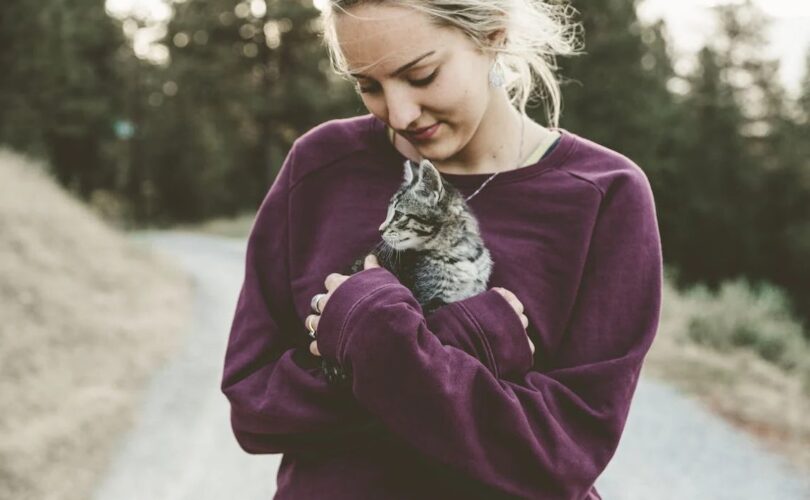The healing journey from addiction is one that requires immense courage, and a wide range of approaches are utilized to aid this journey, each designed to address different facets of addiction. Among them, animal-assisted therapy is one technique that stands out, owing to its unique and highly effective approach to the recovery process.
Animal-assisted therapy, in essence, involves using the natural bond between humans and animals as a therapeutic tool. This therapeutic model is predicated on the eastern philosophy of interconnectedness, which posits that all living beings share an intrinsic connection, a concept that is brought to life in your interactions with animals in therapy.
Animals, with their unconditional love, can serve as powerful companions on your journey towards recovery. They offer comfort and reduce anxiety and stress – emotions often linked to substance abuse. Their ability to remain present, a key tenet of mindfulness, can help you focus on the here and now, rather than getting lost in past regrets or future anxieties.
One of the most potent aspects of animal-assisted therapy is that it promotes nurturing, a characteristic that can be severely damaged by addiction. Taking care of an animal can help you rediscover your ability to care for others and, more importantly, for yourself. It can help boost your self-esteem, as you witness the positive effects of your care on the animal.

There’s an undeniable strength to be found in these non-judgmental, therapeutic relationships, as you find yourself working alongside a companion that doesn’t stigmatise or discriminate, but simply accepts you. This therapy could act as a mirror, reflecting your feelings, and helping you understand and process them in a safer environment.
Frequently Asked Questions:
- How does animal-assisted therapy work? Animal-assisted therapy works by creating a bond between the person undergoing treatment and an animal. This bond can promote healing and improve physical and emotional well-being. The presence of an animal can provide comfort, reduce feelings of anxiety, and promote a sense of connection. In some cases, responsibilities like walking or grooming an animal can provide a sense of purpose and accomplishment, supporting recovery.
- What types of animals are usually involved in animal-assisted therapy? Different animals can be used in animal-assisted therapy, depending on the setting and the therapeutic goals. Dogs and horses are commonly used due to their sociable and intuitive nature. Other animals, such as cats, rabbits, and even farm animals like chickens and goats, can also be involved.
- Are there any risks associated with animal-assisted therapy in addiction treatment? Like any therapy, animal-assisted therapy is not without its potential risks. These might include the risk of an allergic reaction, potential injuries due to animal behavior, and the risk of disease transmission. It’s also essential to ensure that the treatment is emotionally beneficial and doesn’t lead to increased anxiety or stress for the individual or the animal.
- How can one access animal-assisted therapy for addiction treatment in South Africa? In South Africa, several organizations and therapy centers offer animal-assisted therapy as part of their treatment programs. For more information or to find a suitable service, you might consider reaching out to local mental health organizations, animal therapy organizations, or services like We Do Recover, who can provide expert guidance and resources.
- How does the eastern philosophy of interconnectedness come into play in animal-assisted therapy? Eastern philosophy often emphasizes the interconnectedness of all beings. In animal-assisted therapy, this concept comes into play through the therapeutic bond between the person and the animal. This bond can help individuals realize that they are not isolated in their struggles but are part of a larger, interconnected world. The act of caring for another being can enhance this sense of connection, fostering empathy, understanding, and mutual respect, all of which can be healing in the recovery process.
You’ve journeyed through the complex world of addiction treatment and explored the different roles that community-based programs and animal-assisted therapy can play in the process. The path to recovery is a personal one, filled with unique challenges and breakthroughs, and it’s essential to remember that no single approach fits all. You may find that a combination of methods, including traditional therapies, community programs, and the powerful bond with an animal, works best for your unique needs.
Your journey towards recovery is not a destination, but a continuous process. Whether you’re engaging in community programs or connecting with an animal, remember that every step you take is a step towards your recovery. These approaches serve as reminders that you’re not alone in your journey. The community stands beside you, ready to lend its support, and the unwavering companionship of an animal can offer comfort during the difficult times.
In this process of healing and recovery, it is vital to remember to be kind to yourself. It’s okay to feel overwhelmed, it’s okay to stumble, and it’s okay to ask for help. There’s a profound strength in vulnerability and an undeniable power in connection, whether it’s with fellow members of a community-based program or with an animal companion.
Your path to recovery might be filled with unexpected turns, and that’s okay. Take one day at a time and remember the words of A.A. Milne: “You are braver than you believe, stronger than you seem, and smarter than you think.” Your journey to recovery may be the hardest thing you ever do, but it will also be the most rewarding. You’re stepping into a new chapter in your life, a chapter filled with hope, healing, and endless possibilities. Keep going; the world is cheering for you.







